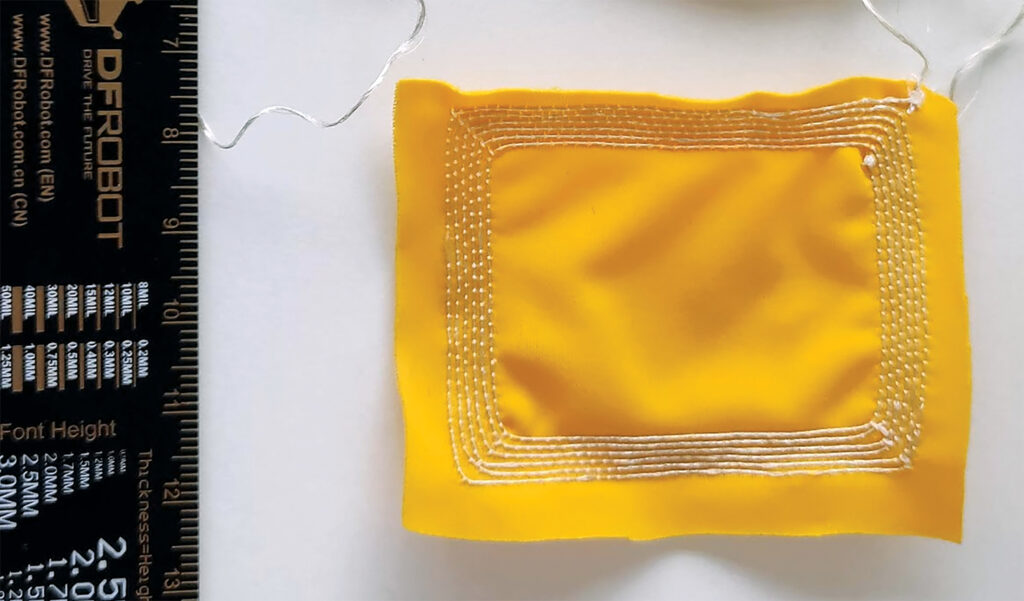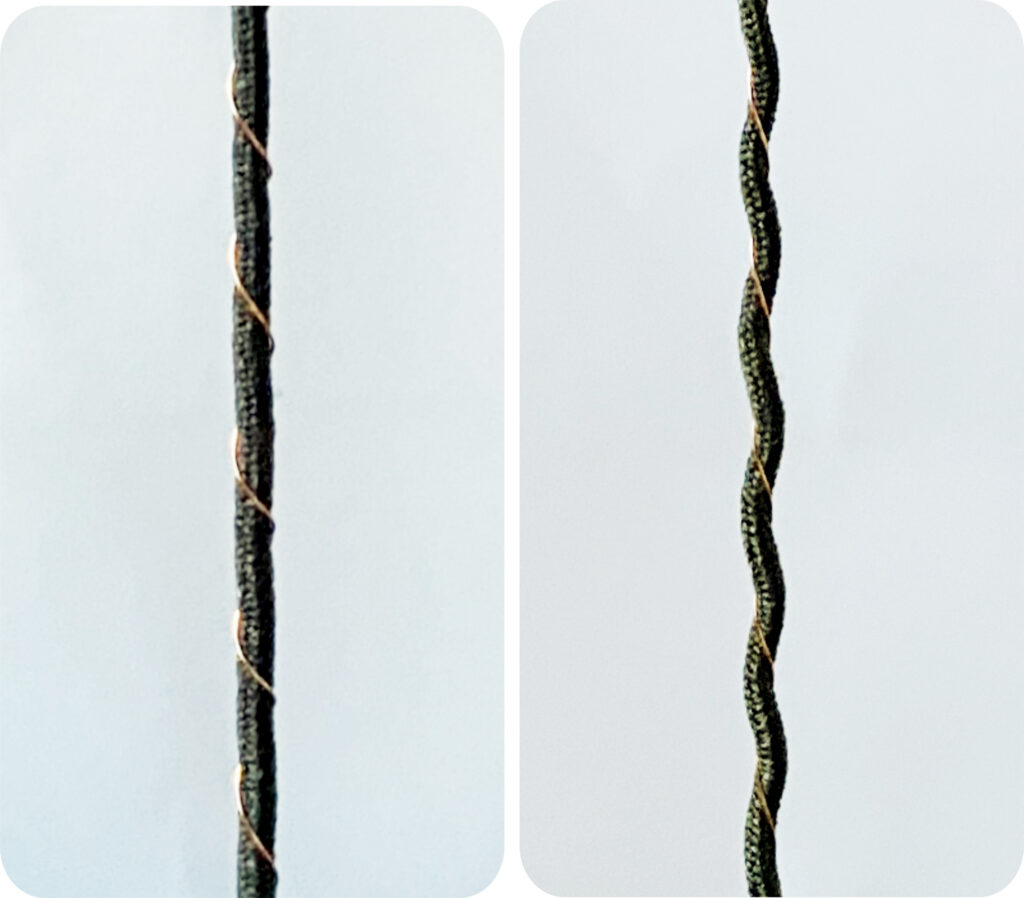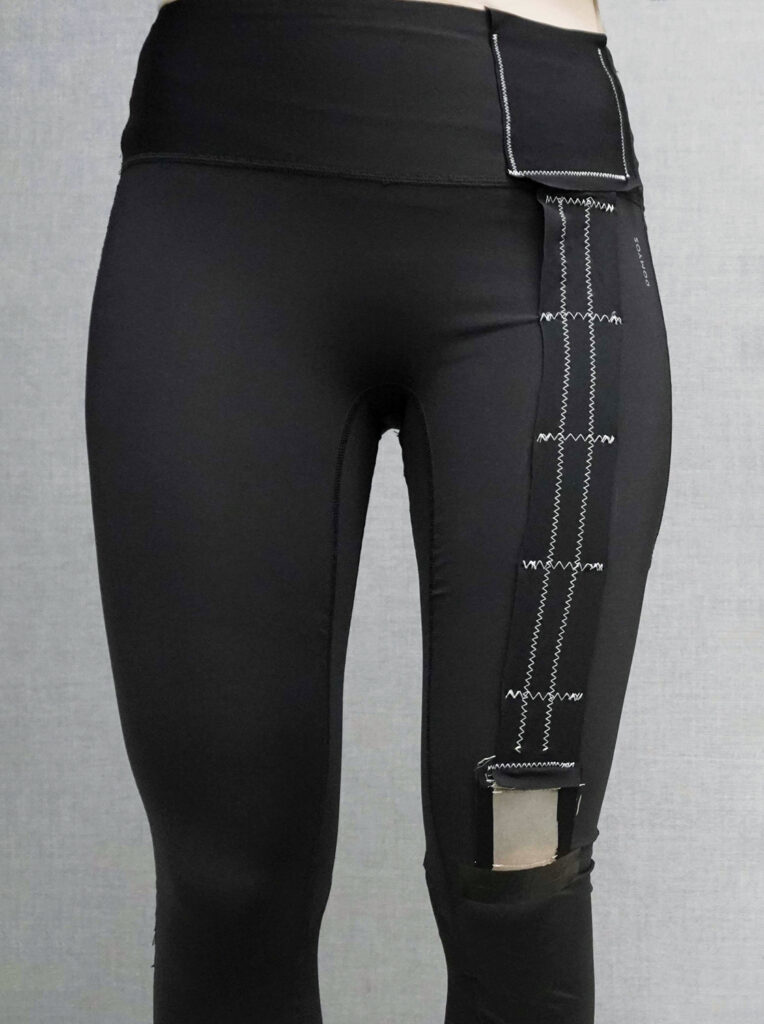
Pushing fatigued muscles past the exhaustion point can cause injury. Prevention—through the detection of exhaustion—is the goal of a new textile sensor that ETH Zurich researchers are working on in the Biomedical and Mobile Health Technology Lab.
The inner sensor fiber is conductive rubber, and around it is wrapped a plastic-coated rigid wire. The combination serves as a capacitor, capable of holding an electric charge. Every time the smart yarn is stretched and it slackens, the changes in position of the two materials relative to each other alters the electric field around them and the charge held by the capacitor.

In their trials, the researchers attached their yarn sensor to athletic leggings. Because the system is so close to a person’s body, it’s able to record miniscule changes in charge. To allow the sensor to send its data to a smartphone, they also sewed in a loop antenna made of the conducting yarn.
No batteries or chips needed to be sewn into the clothing pieces containing the sensor, which could streamline their manufacture on a bigger scale.

As runners testing the leggings became increasingly tired, their movements, and thus the signals sent across the sensors, changed.
The pattern in this data depicted when the runners became exhausted.
Next steps in developing the sensor will be to gather data from many runners to hone its predictive ability and to continue work on the smartphone app that will monitor the data in real time.
Researchers also see workwear and rehabilitation medicine applications for the exhaustion sensor.
 TEXTILES.ORG
TEXTILES.ORG


